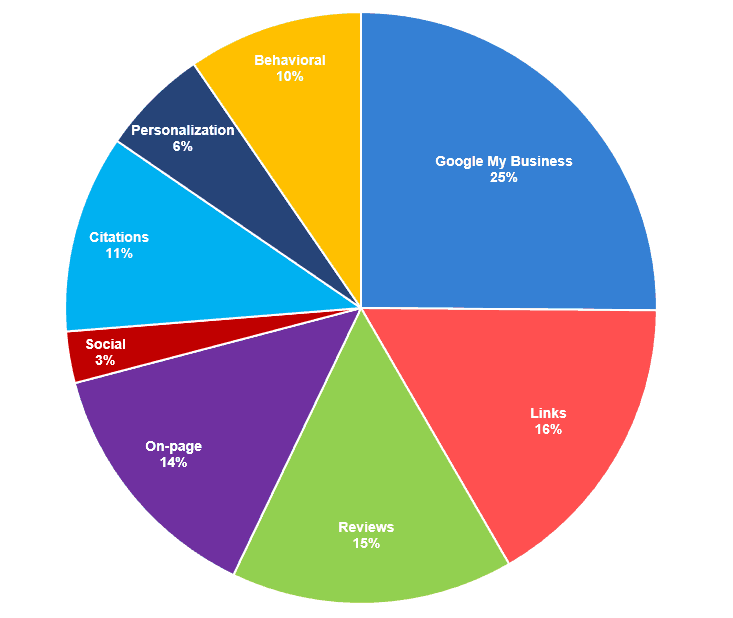- Home
- Learn
- Healthcare
- 7 Healthcare Marketing Trends to Watch in 2025
HEALTHCARE
7 Healthcare Marketing Trends to Watch in 2025
Contents

Explore 7 key healthcare marketing trends transforming patient engagement, digital outreach, and brand growth. Stay ahead in the evolving healthcare landscape.

Businesses have long warned of a massive increase in consumer control: a new age dominated by the highly informed, highly discerning buyer, capable of controlling the entire purchase journey from start to finish.
However, it appears that healthcare has only recently woken up to this phenomenon.
Beginning in the early days of the pandemic, medical “customers” suddenly found themselves with an influx of health concerns and a lot of time on their hands to research and prepare before settling on a course of treatment.
Yet it’s likely this COVID-era development was just the latest phase in an ongoing industry transformation characterized by a rise in deductible fees, as well as an uptick in medical costs.
But whether the change came before the pandemic or after, the result was the same: a new breed of empowered healthcare consumers, forever in search of seamless, individualized experiences made popular by online vendors and big-box retailer brands.
It’s what’s become known as the “consumerization of healthcare,” and its “patient-first” principles are the key to healthcare marketing success.
In other words: If you’re a marketer hoping to gain any ground in the healthcare field over the next 12 months, your patients will have to take front and center.
Ramon Soto,
“I actually think [healthcare marketing is] probably 10 years behind the times in terms of our sophistication and approach, and I don’t think anybody benefits from that… So we have a lot of work to really rethink how we go to market, how we tell our story, how we engage with consumers… We have to get to a very different place. It’s a call to arms.”
Senior VP, Chief Marketing and Communications Officer
Northwell Health
Your industry has fallen behind. And the time for catching up is now.
Here are seven critical patient-first trends to internalize for the new year.
With more and more prospects conducting their own digital research, reputation management has gotten very, very real.
“But I have no control over patient reviews!” you say.
Yes and no. You might not be able to change what people say about your practice, but you can guide the overarching conversation by spotlighting positive patient experiences and engaging in social and communal outreach.
As for reviews themselves: you have to make them available. And you have to proactively cultivate them whenever you can. Why?
Also, reviews count for a lot when it comes to ranking on Google[EH1] .

So how do you make sure your online reputation looks good (and stays that way)?
Some ideas:
It’s territory we’ve covered before, but it still holds true for 2025 and beyond.
As far back as five years ago, healthcare consumers were listing personalized interactions with providers as a top priority. And yet, in 2020 an estimated 71% of healthcare service providers still performed at subpar levels for smoothness of operations regarding patient interactions and communications.
Techniques for personalization can help your practice buck this downward trend.
Tips for helping prospects feel less like a number and more like a valued customer include:
Above all, remember to remain flexible, as each prospect represents a different set of needs, wants, and health concerns.
I’ll wrap this idea with the words of Don Stanziano, chief marketing, and communications officer and digital engagement leader at Geisinger Health:
“There is no one best approach because every customer is on their own journey… You have to tailor your content and your channel selection to meet the needs of customers at every stage of the journey. If you have the right mix of content distributed across the right channels, the customers will tell you where they are.”
Thought COVID put privacy laws on hold?
Think again.
While some restrictions for remote communications were eased in light of the pandemic, regulations for the protection of electronic protected health information (ePHI) remain alive and well.
As we move into year three of the COVID era, you’re still very much required to remain compliant with a variety of crucial industry directives including:
Ensure all systems used for storing and disseminating prospect/patient information can meet the necessary requirements for compliance under these guidelines (which—spoiler alert—can and will change over time).
Also, keep in mind full compliance might necessitate programs for data encryption as well as a system for regular security audits.
[Note: Going into business with a third-party vendor? Make sure they can commit to a business associate agreement (BAA) for HIPAA-compliant procedures before signing them on.]
As patients become more empowered, healthcare marketing will become an increasingly multifaceted—and multi-channeled—game.
You’ve heard of the sales funnel? Now, meet the sales cyclone: a place where consumer priorities are in constant flux and buyers’ journeys never follow a linear pattern. Curious prospects can jump from website to whitepaper, Facebook, YouTube, appointment booking, and back again.
And your voice and value proposition must remain consistent throughout.
Stay ahead of the storm with an all-encompassing marketing plan that involves both inbound and outbound strategies for healthcare marketing.
Next, build a content arsenal that speaks to every possible prospect need, from preliminary research articles to “What to Expect at Your First Appointment” newsletters.
Finally, be sure your strategy covers a diverse network of media channels so you can find and accommodate prospects at every turn.
An optimal omnichannel experience will ideally include a mix of:
…and more.
The point is to be available to your prospects in the right place, at the right time. To do this, research your desired audience and figure out what they’re looking for, as well as where they “live” (i.e., spend most of their time).
Then be ready to meet them there, armed with actionable info to help propel them forward.
Actually, it’s not so much a wave as it is a whole ocean.
And though interest in telehealth appointments is likely to rise and fall with each new COVID variant, telehealth as a whole—which incorporates everything from remote doctor visits to EHR management—is a new medical reality, permanently woven into the fabric of the industry.
Indeed, telehealth utilization appears to have hit a post-pandemic plateau of 38 times what it was in the days before COVID, meaning telehealth adoption is still in the midst of a massive spike. And as we head further and further into the digital age, telehealth will no doubt remain a large part of how practices do business.
We’ve covered marketing for telehealth at length in a recent series of posts, but here are a few major points to carry with you into the new year:
Obviously, the rise of telehealth will translate to an increase in technology.
And to keep up with our tech-driven times, every healthcare marketing team will need seamless front- and back-of-house solutions for (a) communicating with patients, (b) transmitting crucial medical info, and (c) tracking and synthesizing engagement data. (This applies to all providers, but it’s particularly important for practices hoping to expand in the coming year.)
Here’s a small checklist of tools to employ in 2025:
“When people areseeking healthcare information or treatment, they turn to Internet searches, and [you must do] a phenomenal job of creating content that is actionable, helpful, and relevant to people dealing with medical issues that [appear] in their search results.”
amanda todorovich,
Executive Director, Content Marketing
Cleveland Clinic
SEO is the granddaddy of digital marketing. And in a post-COVID, work-from-home world, digital is more or less your only playing field.
Be mindful of SEO best practices and check in on the latest algorithms as often as you can. Your SEO keyword resolution should focus specifically on the needs and pain points of your surrounding community.
If you don’t keep up, your competition will, and you’ll risk ranking beneath them.
Other SEO factors to think about in 2025:
Eleni Hagen is a content strategist and writer focused on SaaS. She also creates content for performing arts institutions and tunes into Boston Red Sox games with fervor.
(+1) 732-385-3546 (US)
080-47359453 (India Sales)
080-46801265 (India Support)
62-87750-350-446 (ID)
(+971)-553-353-122 (UAE)
![30+ Critical Sales Interview Questions [With Model Answers] 2 sales interview questions to find the best reps](https://www.leadsquared.com/wp-content/uploads/2022/01/sales-interview-questions-to-find-the-best-reps-80x80.jpg)
 5 Innovative Ways to Deliver Better Customer Experiences in Insurance
5 Innovative Ways to Deliver Better Customer Experiences in Insurance